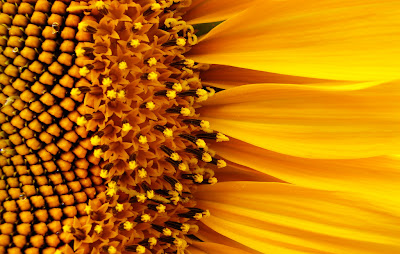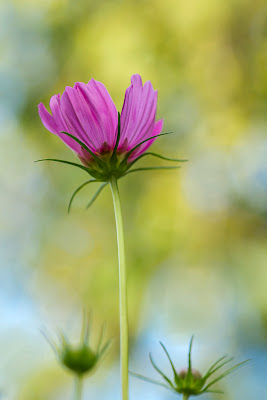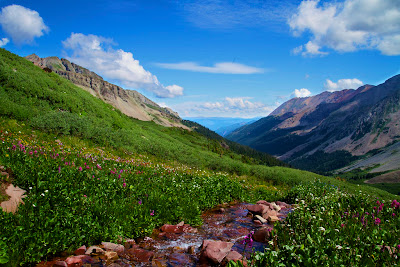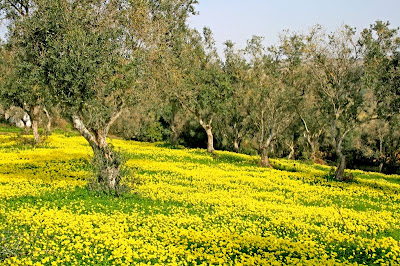 |
| Photo by: Hamed Saber |
Though flowers are short-lived; the impact they make lingers far longer; poets have sung a lot about them; that flower would have wilted next day; even the poet who penned it would have died years back; but the poem is still there for us enjoy. A well captured image of a beautiful flower lasts and lasts; as thing of beauty is a joy forever.
Flowers are great subjects for photographers too; wherever you are; you could easily find lots of flowers; garden or wild; all waiting to have their picture taken. And for a person who has newly acquired a DSLR what could be more satisfying than being able to take amazing pictures of these wonders of nature. This article is intended for the newbie to help get started in flower photography.
Great Flower Photography Start With a Vision
 |
| Photo by: Kevin Dooley |
Visualizing the picture in the mind’s inner eye is the key for taking great photographs. When a photographer happens to be in a place where there are plenty of flowers; immediately taking the camera and shooting is not he proper way; take a moment to view the scene, decide what is to be photographed and how to frame the picture. It can be a macro photograph of any of the floral parts like pollen or a stamen, a close up of a single flower, a bouquet of flowers or a field of innumerable numbers of flowers or whatever the theme demands.
The specifics of the picture;method of photographing the flower etc.depends upon the photographer’s idea and requirement.However there are some general factors which may come in to use in all cases.
1. Quality, direction and angle of light
2. Focus
3. Shooting Angle
4. Depth of Field
5. Exposure
6. Saturation
7. Wind
Even though all of the above are to be considered in most of the cases, depending upon how you wish to capture the flowers; their relative importance may change, we will discuss all the options and ways to tackle these in detail.
Let’s Start with Macro Flower Photography
 |
| Photo by: Louise Docker |
Close up photography is the art of photographing very small things. Macro photography is simply extreme close up photography. The difference between the two is in the scale.The ratio of subject size on the sensor plane to its actual size is known as reproduction ratio.True macro photography is when the ratio is equal to or greater than 1:1 (otherwise known as life size magnification).
Macro photography requires a dedicated macro lens or other accessories like close up filters, reverse rings, extension tubes, macro bellows etc. which allow you to go to life size magnification and beyond. With macro photography- unless shooting a very small flower- you will only get a small portion of the flower in the frame, so try to compose on the most interesting part of the flower.
 |
| Photo by: Noel Zia Lee |
The most important thing in macro photography is focus. The distance from the tip of the lens to the subject will only be a few centimeters or less. There will be only very shallow depth of field to work with (a few millimeters or less);as magnification increases; depth of field decreases; hence achieving precision focus is critical, first decide exactly what part of the flower should come in sharp focus, (pistil, stamen, pollen etc.). The best method is to decide on the fly, set your lens to the desired magnification; move the lens closer or farther to bring different parts of the flower in or out of focus. When an interesting composition appears press the shutter-button.
Direction and angle of light are important factors; take a position so that either you or your equipment will not block light from hitting the subject. It is recommended to set your camera’s metering mode to spot meter. A tripod is highly recommended for macro work, accessories like macro focusing rail, cable release etc. could also make the work easier and improve the quality of your photographs.
 |
| Photo by: Louise Docker |
It is nearly impossible to do macro work when there is wind, try to block it (a few pieces of poster boards will do), wait for the wind to subside or even consider of taking the flowers indoors. In most cases with the lens positioned only a few inches away from the flower, natural light proves either insufficient or difficult to reach the subject; similarly the light from your on camera flash will also struggle to reach the subject as either the hood or the lens itself will shield the subject from light, however there are some specialist flash units like the Macro Ring Flash and Macro Twin Flash which are specially built for macro work.
To add an element of interest to macro flower photograph wait for a bee or ant gathering pollen, a spider waiting for prey, a butterfly sipping nectar etc. To capture them there must be a lot of patience; wait for the critter,patience pays in the form of very interesting images.
Now Let’s Move on to Close Up Flower Photography
 |
| Photo by: Louise Docker |
In close up flower photography we are considering the shot of a single flower head. Much of what we discussed in the macro flower photography section applies here too. Carefully select a good specimen to shoot, spot metering works well here too, a tripod could be of great help but you won’t need accessories like macro rails.
Now that we are not magnifying our subject much we have a little more depth of field available in our shots to work with. In close-up photography also focusing is a very important factor though not as critical as in macro. Factors like quality, direction and angle of light are now very important and could either make or break your shot.
 |
| Photo by: Louise Docker |
Two common lighting situations, Front lighting (Light coming from behind the photographer) and Back lighting (light coming from behind the flower and towards the camera) could work well. When working with front lighting watch your own shadow. When shooting of a flower is done with light from backside; watch out for flare(light shining directly into the lens producing ghost like blobs). Flare can be avoided by either positioning your camera so that the light doesn't shine directly into your lens, or by shading the lens with your hand, hat or any other opaque object. Make sure that the light reflecting object is kept out of the frame. Accessories like diffusers and reflectors could be very helpful in controlling the amount and quality of light.
 |
| Photo by: Louise Docker |
Another important consideration when photographing single flowers is the shooting angle. How high or low do you want the camera to be? The answer is best determined by simply eyeballing your flower. Walk around the flower to watch the play of light from different sides, see how it looks from different heights. Lie down to see it from a very low angle or stand up and see it from a high angle of view
In addition to the lighting; also consider what makes the background that will be visible in the photograph. Brown dirt, green grass, or blue sky can give a very different feeling to the photo.Polarizing filters can be used to reduce reflections and improve the saturation of flowers.
Bigger floral subjects: Photographing a Bed of Flowers...or a field of them?
 |
| Photo by: Zach Dischner |
Now we move on to wider lenses, a normal lens or a wide angle or ultra wide angle lenses.Focus is no longer critical as it can extend a few meters or even miles. Metering modes like Matrix or Evaluative will give better results in such situations.
The quality, direction and angle of light could make a big difference, walk around and look from different sides, front-lighting will work but backlighting or side-lighting may work even better. Try different camera angles, use the perspective distortion of wide angle lenses to your advantage; stoop down to see if the image is improved from a low angle that will accentuate the nearest flowers. Be careful when using polarizing filters on wide angle lenses as it could render the sky as unevenly polarized making it look artificial.
 |
| Photo by: Vince Alongi |
A bed or field of flowers that look exquisite to your eye may make an awfully dull picture; Look for something that will add interest to the scene;rather than making flowers the main subject look for something else that will draw the eye of the viewer; flowers can be a complimentary factor.
When photographing a flower bed, look around. Perhaps, a child playing amidst the flowers will make a far more interesting picture or an odd house behind it. Is there a barn that would make a better subject? A tree, a windmill, a lone person far out in the field, a babbling stream or anything of some charm can add much. Chances are if you look around you'll find lots of potential targets that will add considerable interest to your photograph.
 |
| Photo by: Francisco Antunes |
Flowers are not just beautiful objects; they do the vital function of reproduction in plants; it is a flower; a scientist uses to identify the family of a plant. For Hindus there is no religious ritual that doesn’t need flowers. Let a thousand flowers bloom; for scientists, the religious and also for photographers!
Post a Comment